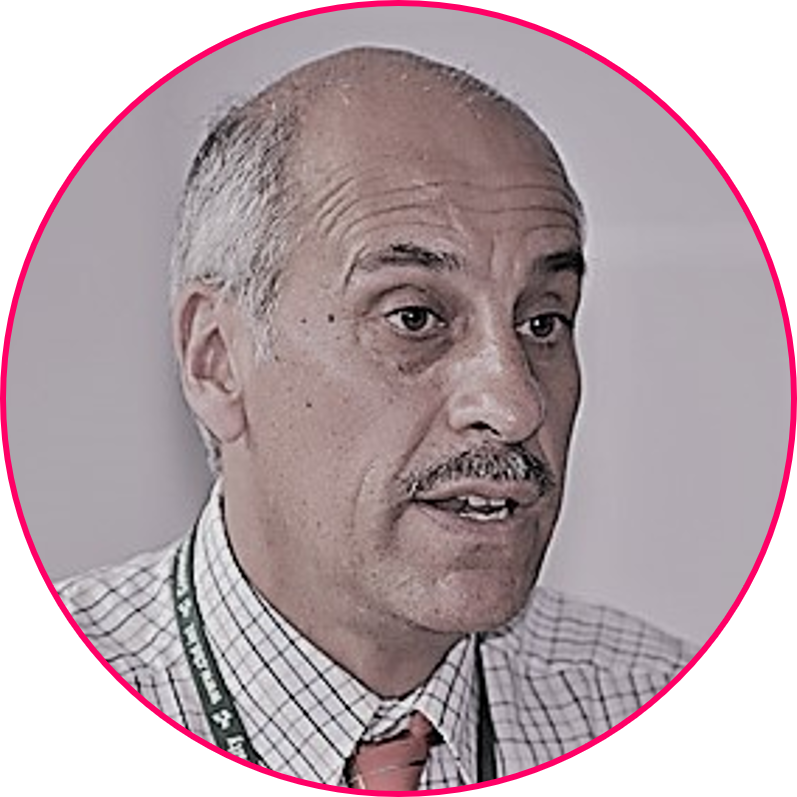Data collected in cities have a strategic role to play to foster cities’ efficiency and sustainability. Nevertheless, it is not technology what makes cities smart; but smart people making smart use of technologies.
 |
“Data collected in cities are ‘digital commons’, which must be shared and put to use through the collaboration among all stakeholders, including government, academia, the industry and city residents, which are not mere ‘end-users’ but co-creators of the social change”. Karl-Filip Coenegrachts, Strategy Manager, City of Ghent |
In the last decades, a huge amount of data has been collected in cities, about the features of the land, the quality of the air, the movements of the soil, the buildings, the parks, and about their inhabitants, their movements, behaviours and preferences.
No software or algorithm alone can make sense of these data and put them to use to respond to cities’ needs but the citizens themselves. Leading administrations have thus set up citizen feedback collection mechanisms and made the data available for anyone to use. By making open data portals available for citizens themselves, they allow inhabitants to come up with ideas on how to better make use of the data.
Such mechanisms are to be based on the principles of co-creation and multi-disciplinarity.
Urban challenges should not be faced by single city departments, companies or communities. Instead, different points of view on common issues can lead to the development of better, more comprehensive and farsighted solutions.
To address the challenges of urbanisation, stakeholders should not work “in silos”.
 |
“EO is an extraordinary tool. However, in order to fully benefit from it, EO experts need to work jointly with other scientific disciplines and closely with the local authorities in order to have all the elements to address the complex challenges of urbanisation”. Mario Hernandez, Special Consultant, UNESCO |
Cities face challenges such as climate adaptation, health, pollution, and competitiveness. Such issues are too complex to be addressed only by one perspective, be it the one of geosciences, architecture or engineering. Instead, they require the expertise of a wide range of scientific, technological and social disciplines.
To develop satellite-based services that will be used in cities in the long-term, space agencies and private companies acquiring or processing Earth observation data need to work with experts from other disciplines, especially social and economic sciences. The local authorities themselves should be engaged since the beginning.
Co-ordinating needs among different city departments or among different city actors can also help reduce the costs of developing such solutions. Indeed, different city departments can use the same set of data, or work together to develop a common software or processing chain to respond to a common issue. This is the case in Lemvig (Denmark), where the entities responsible for managing water pipes and roads are joining forces to acquire satellite-based data on soil subsidence that both services need.
 |
“I have learned that there are so many uses of satellite-data. But I also learned that we need to exchange and collaborate with other countries. Right now, we need user stories to communicate on the uses of satellite data in cities and get other public administrations interested”. Lars Holmegaard, Lemvig Water and Wastewater Company |
Services based on Earth observation data are today proving their added-value to monitor infrastructure, pollution and risks in cities.
With each passing year, Earth Observation datasets are gaining in spatial and temporal resolution, whilst becoming more accessible and known amongst city authorities. Some applications ― especially for soil, infrastructure and air quality monitoring ― have left the realm of R&D and entered the market. This result could not have been achieved without the efforts of satellite operators, IT companies, governments and local administrations.
The cases of use of Earth observation data presented by local managers and private companies showed that EO can help cities to better manage the public space and the environment, while increasing efficiency. In Lemvig (Denmark), EO allows for better managing of water and wastewater pipes, and its use is expected to generate €500k of revenues per year. In the “Confluence” neighbourhood of Lyon (France), the use of EO data allowed to reduce by 50% the costs to monitor PV systems on rooftops.
Private companies from Belgium, France and the Netherlands also showed different products embedding Earth observation data to monitor air pollution. In several European cities, such information is used to alert vulnerable persons in case of pollution peaks or to better model traffic. An application that was particularly appreciated by the youngest attendants is the use of Earth observation data to assess light pollution. A phenomenon that not only prevents people living in cities from enjoying the night sky, but which also has negative impacts on ecosystems within and around urban areas.
 |
“Cities have pretty much the same questions about Earth observation that they had 10/15 years ago. The difference today is that, thanks to initiatives such as the INSPIRE Directive or the Copernicus Programme, the answers provided can actually be implemented.” Dennis Devriendt, University College Ghent |
Online portals are making Earth observation data more accessible to local managers. However, using the data still requires technical skills.
The gradual uptake of satellite-based services in cities is being facilitated by the creation of online portals providing free and paying raw satellite-based data. The Copernicus Programme is the most remarkable open-data initiative undertaken at the European level. Within the Space4Ghent conference, Eurisy and the Apps4Ghent consortium organised a one-hour lesson on the Copernicus Land Monitoring Service, delivered by a representative of the European Environment Agency. The service allows private and public organisations to process and download Sentinel data on land cover and use, as well as on variables related to vegetation state and the water cycle.
The Copernicus programme has been conceived as a tool for economic development and as a driver for the digital economy. Nevertheless, distributing and making sense of the data is still a challenge. To profit from the possibilities offered by the Land Monitoring Service, cities need the support of staff with a good knowledge of coding, IT and GIS. Such skills are necessary to access and process satellite images, and visualise on maps specific land features and their changes over time.
 |
“A useful comment we bring home to the Land Monitoring Portal is the overall accessibility of data. Currently, the portal still serves data in a straightforward but traditional way. Access is easy for viewing and download, but access to services still requires expert knowledge. We are working towards improving this latter aspect in the next generation of the portal, which should become a one-stop-shop for accessing and analysing Copernicus land data”. Ludvig Forslund, Copernicus Land Monitoring Service |
Creating different data portals might seem redundant, but competition and emulation could accelerate the creation of increasingly intuitive portals.
Nowadays, satellite navigation and satellite communications have found a big number of applications, thanks to the ideas of professionals working in all sorts of fields. In the future, increasing education on satellite services could lead to similar developments in the use of satellite imagery. To start such a process, and with the aim of making satellite-based data and services available to the greatest number of people, the European Commission is building five Copernicus Data and Information Access Services (DIAS). Providing data and information access alongside processing tools, the DIAS should offer cloud-based data processing, with no more need for heavy data downloads.
Numerous other data portals are also being developed by private and public entities and within projects. As an example, NextGEOSS, funded under the Horizon 2020 scheme as the European contribution to GEOSS, has a special focus on encouraging and stimulating data exploitation by businesses. Also in this case, online processing tools are provided to avoid downloading big amounts of data. Capacity building is at the heart of NextGEOSS and the project will identify training needs to encourage wider user-engagement with EO data and its commercial potential in the next 3.5 years.
Data portals are also being created at the national level. In Belgium, the Terrascope portal, operational as of April 2018, is the portal to the Copernicus data for Belgium, providing data that public administrations and businesses can use.
The proliferation of data portals might seem to add an additional challenge to city managers interested in satellite-based services, who could be confused when looking for the best data or service to suit their needs. Nevertheless, thanks to competition and emulation, such multiplication of portals could be functional to the development of better, more user-friendly data portals and satellite-based services, and facilitate the uptake of such services at the local level.
Involving city actors in the development of Earth observation data portals would also help ensuring the usability of such interfaces and the relevance of the data provided to cities’ operational needs.
The “big data challenge” for satellite imagery is to move towards smarter systems for city managers to access and understand the information.
For politicians and public managers to understand the possible uses of satellite-based services, it is fundamental that the information delivered is as intuitive as possible. During years, GIS developers have been producing flashy-coloured maps containing information that remained encrypted to the inexperienced eyes of those who were supposed to use it to deliver better public services. Indeed, even when satellite-based maps are pre-processed and delivered to local managers as “ready-to-use” they can still be difficult to understand. To give an example, it is not unusual that green areas are showcased in red on satellite-based maps, or that buildings are violet.
This gap between the “codes” of those who provide satellite-based services and those who are supposed to use them can be filled by increasing dialogue opportunities among data providers, ITs, and the “potential users” working locally in fields as different as urbanism, environmental protection, health, transport, waste management, risks, etc. This is not only important to foster the use of satellite-based data, but also to involve as many as possible in the development of new ideas to put them to use.
Another effective way to distribute satellite data to private and public organisations locally is to embed Earth observation data in cities’ open data portals. Most European cities are making available open data to foster their use, especially by private companies and entrepreneurs. Satellite-based data should be accessible through these same portals. Indeed, most city departments and private companies will not care about the provenance of data, but about their accuracy and usability. Concerning usability, it is also important to consider the standardisation and processing of Earth observation data.
In Flanders, the Region has developed an online “Image processing chain” gathering and making available remote sensing data on Flanders. The portal also offers on-demand processing of the data into new geographical information. As a virtuous example for other European regions, the image processing chain is part of Flanders Radically Digital, an online database of digital information on the whole Flemish public administration.
The added-value of local open data portals as compared to portals especially dedicated to satellite-based data is that they are consulted by a greater variety of city actors. This means that Earth observation data can reach a much bigger number of people, and that new ideas to use them can potentially emerge from the whole city ecosystem.
 |
“The real challenge is to make the whole urban ecosystem aware of the potential of Earth observation data to improve quality of life in their city”. Nicolas Beaugendre, General Manager, KERMAP |
Cities are, at the same time, the object and the actors of innovation.
Local administrations have a crucial role to play to foster innovation. Bringing innovation in the way local administrations work and providing cities with innovative tools to deliver public services will be fundamental to grant Europe’s welfare and competitiveness in the future.
At the same time, local administrations can also foster the use of existing satellite-based services and boost the development of new services through their procurement policies. Indeed, local governments alone were responsible for 44% of public investments in the EU-28.
The major role of cities in fostering innovation in Europe has been today recognised, while cities themselves are looking for strategies to boost their efficiency and competitiveness through innovative solutions.
The European Innovation Partnership for Smart Cities and Communities, launched in 2011, is working to establish strategic partnerships between industry and European cities to develop the urban systems and infrastructures of tomorrow. Eurisy is working with the Partnership to make sure that satellite-based services are part of this process.
 |
“Europe’s future will be made in and by cities and regions”. Daniël Termont, Mayor of Ghent |

